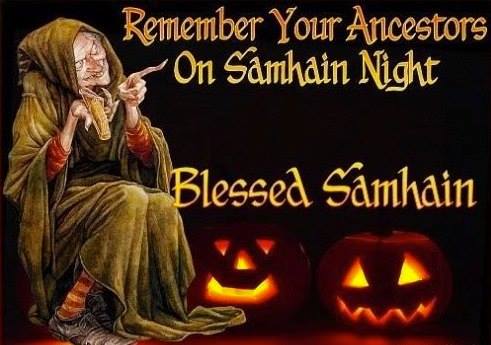
Halloween has come a long way from its origins in Ireland as the pagan festival of Samhain. In the ancient Celtic traditions of old Ireland, Samhain was the end of summer and the beginning of winter, a time of long and cold nights and for many a portent of death. As these two periods crossed over at Samhain, the dead supposedly returned to the mortal world and so large communal fires were lit to ward of evil spirits. These festivals of fire were well documented at the royal court of Tara and would include a Feile na Marbh, a festival of the dead. In parts of Ireland it was believed that a puca, or mischievous sprite would cast spells on unsuspecting folk. Originally Samhain would occur around moon cycles at the start of November and was observed in Ireland well into the 6th century, despite the introduction of Christianity. When Christianity set November 1st as All Saints Day or All Hallows Day in the 8th century, the Irish Celts were reluctant to give up their festival and so celebrated Samhain as All Hallows Eve, which later became corrupted to Hallowe'en and Halloween. In America there is no mention of Halloween until the early 19th century following mass trans Atlantic emigration by over 2 million Irish escaping the Great Famine from 1845-1849. With them, the Irish brought Halloween and other age old customs. By the early 20th century, America began to commercialise Halloween with postcards, figurines and later masks and costumes, transforming the festival into one of the most profitable times of year for retailers. Indeed America has had such an impact on Halloween that many people believe it is an American invention, rather than an ancient Irish Tradition. With such a cultural influence, Halloween today in Ireland is celebrated very much the same as in the States. Adults and children dress up as witches, ghosts, zombies and all kind of macabre figures and go to fancy dress parties or go out trick or treating. Houses are bedecked with Jack O'Lanterns, broomsticks and other Halloween decorations. An Irish tradition is for families to share Halloween cake called barnbrack or 'brack'. A number of family orientated events are celebrated throughout Ireland today. One of the biggest Halloween events in Ireland is the Banks of the Foyle Hallowe'en Carnival held in Derry city. Each year thousands of people in the city get into the spirit of Halloween by dressing up in costumes, with a grand carnival held within the citys medieval walls on October 31st accompanied by live music. Its a festival atmosphere with a fabulous firework finale. Dublin hosts Samhain with a parade from Parnell Square along O'Connell Street and finishing in Temple Bar in a kind of carnival of all things ghostly and ghoulish. At Malahide Castle there are ghost tours inside of Irelands oldest inhabited castle, which is haunted by five spectres. There is the ghost of Sir Walter Hussey, killed on his wedding day in the 15th century, who walks the halls seeking revenge on the rival who killed him and married his fiance. Then there is that of Lady Maud Plunkett, chasing her long dead husband through the corridors of the castle. Oh and also the ghost of Miles Corbett, who was hung drawn and quartered and who appears as a Cromwellian soldier before falling into four pieces. The ghost tours at the castle outline many a fascinating haunting tale throughout the castles 800 years. Not to be outdone, Bunratty Castle and Folk Park in Co.Clare has a range of fancy dress, magic shows, face painting, traditional music and Halloween games taking place. So lots of stuff going on in Ireland today, the home of Halloween, happy Samhain!



